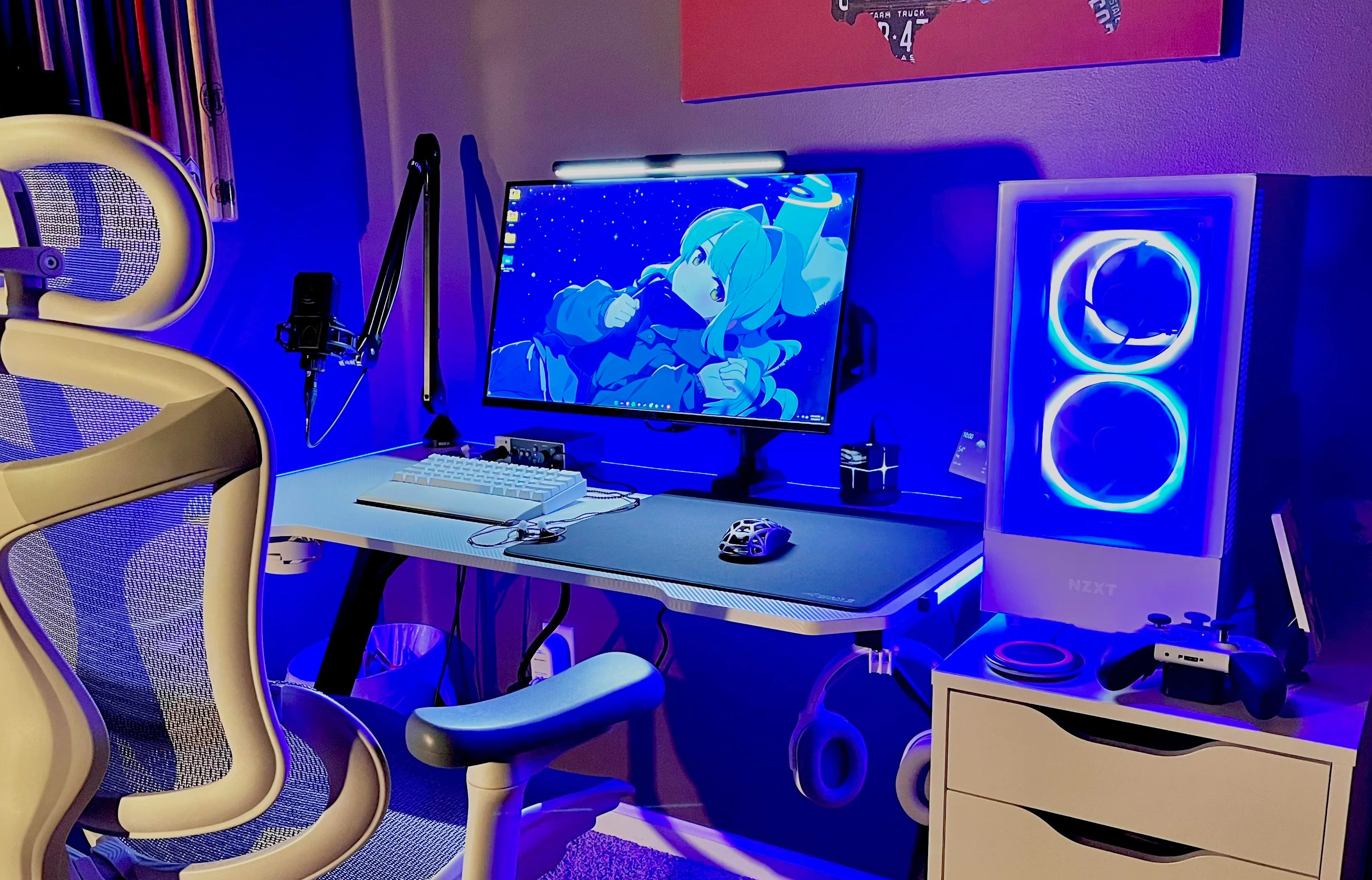
Building a gaming PC has never been more accessible or exciting than in 2025. The current generation of hardware offers unprecedented performance across all price points, while component compatibility has become more straightforward. Whether you're building your first rig or upgrading from an aging system, understanding modern hardware helps you make informed decisions that maximize performance within your budget.
Foundation: Choosing Your Processor
Your central processing unit defines your system's core capabilities. Modern gaming CPUs have evolved beyond simple core counts to emphasize efficiency and specialized gaming performance.
Budget Category: Best Value Performance
For builders with limited budgets, the current generation of mid-tier processors delivers incredible gaming performance. Look for chips offering six to eight cores with high boost clocks. These processors handle modern games excellently while leaving room in your budget for a stronger graphics card, which typically matters more for gaming performance. The latest generation chips from both major manufacturers offer excellent value, with real-world gaming performance that rivals more expensive options.
Mid-Range Excellence
Stepping up to eight-core processors with faster memory support and larger caches provides headroom for streaming, content creation, and future game requirements. These chips excel in both gaming and productivity workloads. The performance gains over budget options become apparent in CPU-intensive games and multitasking scenarios. This category represents the sweet spot for most enthusiast builders who want longevity without overspending.
High-End Gaming and Beyond
Top-tier processors with twelve or more cores cater to users who demand maximum performance for competitive high-refresh-rate gaming or serious content creation alongside gaming. These chips eliminate any potential CPU bottlenecks and provide future-proofing for increasingly demanding games. However, the price premium is substantial, and most gamers won't notice significant differences compared to mid-range options in typical gaming scenarios.
Graphics Cards: The Heart of Gaming Performance
Your graphics card determines gaming experience more than any other component. Choosing the right GPU requires balancing resolution targets, refresh rate preferences, and budget constraints.
Entry Level: Solid 1080p Gaming
Modern entry-level cards deliver smooth 1080p gaming with high settings across most titles. These GPUs represent the minimum viable option for current games and will handle esports titles at competitive frame rates. Ray tracing capability exists but performance with it enabled is limited. For budget-conscious builders primarily playing esports or older titles, these cards offer excellent value.
Mid-Range: High Refresh Rate and QHD Gaming
The mid-tier GPU segment offers tremendous value in 2025. These cards handle 1440p gaming with high settings while maintaining excellent frame rates. Ray tracing becomes genuinely usable, and upscaling technologies like DLSS or FSR provide additional performance when needed. This category suits most serious gamers who want beautiful visuals without extreme costs. These GPUs also excel at 1080p high-refresh-rate gaming for competitive players.
High-End: Maximum Fidelity Gaming
Premium graphics cards target 4K gaming with high settings or maxed-out 1440p with ray tracing enabled. These GPUs provide performance headroom for the most demanding titles and feature cutting-edge technologies. The cost-to-performance ratio diminishes at this tier, but the experience represents the pinnacle of PC gaming. Consider these cards if you have a high-end monitor that demands maximum performance or if you refuse to compromise on visual quality.
Memory: Capacity and Speed
RAM requirements have stabilized around specific sweet spots that balance cost and performance effectively.
Capacity Considerations
For pure gaming builds, 16GB remains adequate for current titles, though 32GB provides comfort for heavy multitasking and future-proofing. Content creators and streamers should strongly consider 32GB as a baseline. Memory prices have stabilized, making 32GB accessible for most builds. Going beyond 32GB only makes sense for specialized workloads beyond gaming.
Speed and Timings
Modern platforms benefit from faster memory, with DDR5 becoming standard on current systems. Higher frequency RAM with tight timings provides measurable performance improvements in gaming, particularly with processors that leverage fast memory effectively. However, the practical gains diminish beyond certain thresholds. Opt for your platform's recommended sweet spot for memory speed rather than chasing the absolute highest specifications.
Storage: Speed and Capacity Balance
Storage technology has matured to the point where fast solid-state drives are affordable and essential for gaming systems.
Primary Drive Selection
Your operating system and primary games should live on a fast NVMe SSD with at least 1TB capacity. Modern PCIe 4.0 drives offer incredible speeds that reduce loading times dramatically. The practical differences between mid-tier and flagship NVMe drives in gaming scenarios are minimal, making mid-range options excellent choices. Prioritize capacity over extreme speed for most builds.
Secondary Storage Strategy
For extensive game libraries, adding a larger secondary SSD provides good value. SATA SSDs offer excellent capacity per dollar and still deliver dramatically better performance than mechanical drives. Some builders supplement with large mechanical drives for archival purposes, but SSDs have become affordable enough that mechanical drives make less sense for gaming-focused builds.
Power Supplies: Stable Foundation
Never compromise on power supply quality. A reliable PSU protects your investment and ensures stable operation.
Wattage Requirements
Calculate your system's power draw and add thirty to forty percent headroom for efficiency and future upgrades. Modern high-end systems typically require 750 to 850 watts, while mid-range builds operate comfortably on 650 to 750 watts. Budget builds can work with 550 to 650 watts. The efficiency rating matters for long-term operating costs and system stability.
Quality and Certification
Look for 80 Plus Gold certification or better from reputable manufacturers. Read professional reviews that test power supplies under load. Quality units include comprehensive protections against electrical issues and use superior components that ensure longevity. The power supply is one component where brand reputation and professional reviews matter significantly.
Cooling Solutions: Keeping Temperatures in Check
Adequate cooling ensures your components maintain optimal performance and lifespan.
CPU Cooling
Budget and mid-range processors work well with quality air coolers that offer excellent value and reliability. High-end chips benefit from larger air coolers or all-in-one liquid cooling solutions. Custom water cooling provides the best thermal performance but requires significant investment and maintenance. Most builders find that good air cooling or AIO liquid coolers provide excellent thermal performance without custom loop complexity.
Case Airflow
Proper case ventilation matters as much as individual component cooling. Modern cases designed with airflow in mind make building easier and keep entire systems cooler. Plan for intake fans at the front and bottom with exhaust at rear and top. Positive pressure setups reduce dust accumulation while maintaining good temperatures.
Motherboard: The Connecting Foundation
Your motherboard should match your processor, provide necessary connectivity, and support future upgrades.
Feature Considerations
Ensure adequate fan headers, USB ports, M.2 slots, and PCIe lanes for your needs. WiFi integration adds convenience if you cannot use wired ethernet. Quality VRM design matters for processor stability, particularly with higher-end chips. Audio quality varies significantly between motherboards, with better boards using superior audio codecs.
Form Factor Decisions
ATX motherboards offer maximum expansion and connectivity. Micro-ATX provides good balance of size and features for most builds. Mini-ITX enables compact systems but sacrifices expansion capability. Choose based on your case selection and expansion needs.
Building for Your Budget
Smart component selection allows building excellent gaming PCs across all price points. Budget builders should prioritize GPU performance over other components, as graphics capability most directly impacts gaming experience. Mid-range builds can balance all components without major compromises. High-end systems eliminate bottlenecks entirely while providing maximum longevity.
Component prices fluctuate, and sales can dramatically improve value. Patient builders who wait for deals on key components often build better systems for the same money. However, waiting forever for the perfect deal means missing out on gaming time with a functional system.
Assembly and Testing
Modern component compatibility makes assembly straightforward. Follow motherboard manuals carefully, take your time with cable management, and double-check all connections before powering on. Initial boot and BIOS configuration sets the foundation for a stable system. Install operating systems on fast SSDs, update all drivers, and stress test your system to ensure stability.
Building a gaming PC in 2025 offers incredible performance potential across all budgets. Understanding component roles and making informed choices creates systems that deliver excellent gaming experiences for years. The building process itself provides satisfaction beyond just the final product, giving you complete knowledge of and control over your gaming platform.



